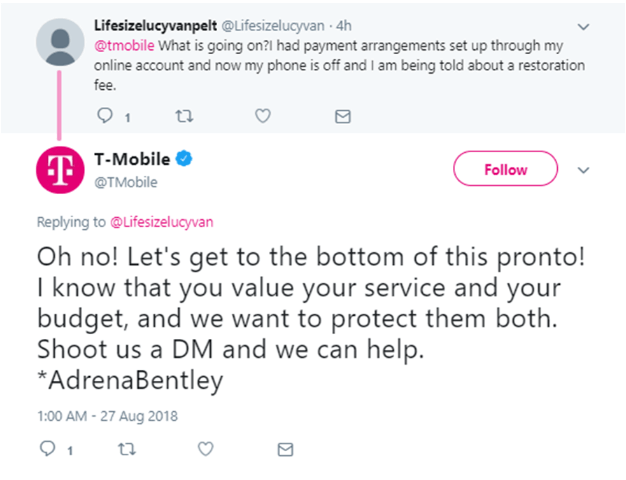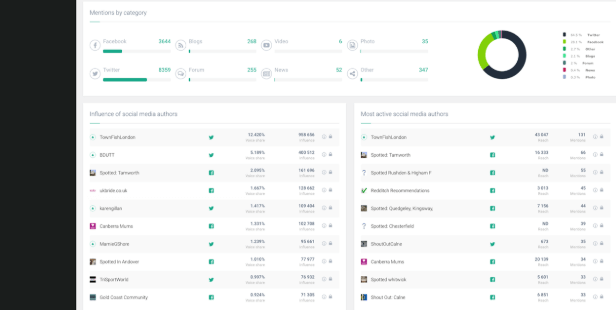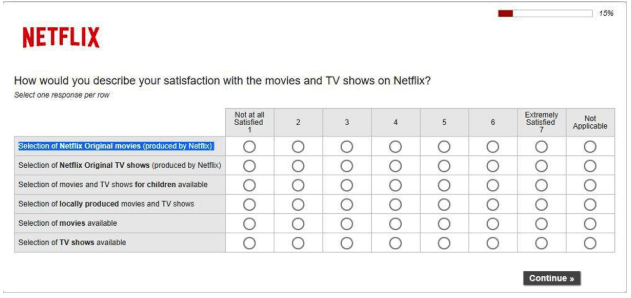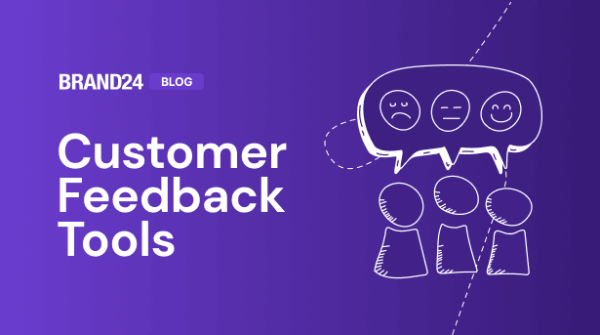How to Improve the Quality of Customer Feedback and Get Amazing Results
Happy, satisfied, and loyal customers are the foundation of your business growth. But in order to create loyal and happy customers, customer feedback is very important. Without asking for customer feedback, you cannot identify and recognize the factors driving customer satisfaction.
And if you don’t know what factors are satisfying your customers, you cannot create loyal customers. This is why it’s crucial for every business to collect customer feedback.
But some companies fail to collect qualitative feedback from their customers. Either the survey forms are too long or some of customers just don’t give feedback because they think that companies don’t care.
To overcome these challenges, this post will talk about effective strategies to get quality customer feedback.
1. Monitor Social Media
In the age of high-speed internet and with the increasing popularity of social media, brands must leverage social media to their advantage. Social media platforms like Instagram, Twitter, Facebook, etc. are a vital source of customer feedback.
You should keep an eye on your brand mentions on social media. This is probably one of the easiest ways to learn how your customers feel about your brand. Your customers can easily access social platforms and talk about your brand, be it a positive comment or a negative one.
This is where you have to be very proactive and respond as quickly as possible. Acknowledge the good feedback from your customers. And if you receive any complaints, try to actively and quickly resolve them. The best thing about social media is that you can directly reach out to your customers and talk to them.
For example, T-Mobile takes advantage of their Twitter account to the fullest. In the screenshot below, you can see a customer complaining about the service. Without ignoring or overlooking it, the brand immediately reacted and interacted with the customer.

Image Source – Twitter
One-on-one conversations with your customers will help you get qualitative feedback from them. It’s not an easy job to keep track of all of your social mentions. But there are tools that can dedicatedly track all of your brand’s mention on any social media platform.
In situations like this, you can use tools like Brand24. This tool gives brands immediate access to their real-time mentions on all social platforms, including mentions from influencers and individual comments. It allows brands to engage with and react to positive and negative comments immediately.

This tool makes it easier for brands to identify and interact with customers who are not happy with their services or products. This helps brands to tackle with unhappy customers much more efficiently and effectively.
2. Feedback Via Email
Email is a very effective method used by brands to get qualitative feedback from their customers. You have probably received an email from e-commerce stores, service companies, or hotels asking you to share your experience.
The screenshot below shows an email from Handy Travel asking for feedback. It is an integrated mobile device that allows hotels and guests to be better connected during their stay.

You can maximize the effectiveness of this valuable channel by improving the way you reach out to your customers. For that, you have to focus on the three main fundamentals when asking for feedback via email from your customers:
a) Promise Your Customers a Quick and Prompt Response
Most of the time, customers decide not to send feedback thinking that businesses aren’t interested in it or that they won’t respond. No wonder many companies don’t even hear from some of their unhappy and unsatisfied customers.
You need to make sure your customers know that you will respond to their feedback. This will motivate the majority of your customers to share their feedback with you.
When asking for feedback via email, a line like, “We’ll get back to you within XX working days,” will motivate customers to leave their feedback.
b) Organize the Feedback from Your Customers
Always ensure that you organize your feedback so you can easily refer to it later on. Create a well-established and structured system to collect and respond to the feedback from your customers.
Make sure you have a system in place to track general complaints, service failures, product ideas, and feature requests. Make sure to save the contact details of the customers who have placed requests for product replacements or enhancements. This will help you inform them after you address their issues.
A structured system like this provides you with a customer roadmap, and you can use this for future interactions.
c) Ask for Candid Feedback from Your Customers
Through one-to-one email interaction, you can generate some quality feedback. Not all customers are comfortable to put their thoughts on social media.
So sending a friendly email can motivate your customers to give honest feedback. The friendly conversation can give you some qualitative and useful information and give you an opportunity to learn and improve.
3. Customer Feedback Survey
Surveys are the most common way of collecting customer feedback. But creating an interesting yet useful customer feedback survey form is not easy. You have to be very cautious and gentle when you ask for feedback from your customers.
Long and unnecessary questions will drive away your customers from giving you feedback. It has to be a quick list of relevant and informative questions. Rather than boring your customers with a long survey form, you can opt for sliders on your website.
The slider survey will appear when a customer is browsing through your website. It’s much easier to collect quality feedback like this, as the survey form is short and quick to answer.
The sliders will appear on your website, so choose 2-3 highly relevant question to include. This will give you highly qualitative feedback. You can use tools like Qualaroo to build questions.
For example, with the help of short survey forms, Twitter successfully gathered qualitative feedback from their customers. The feedback was focused on improving their emoji communications. They prepared short and highly relevant questions for their customers to answer.

4. Measure Your Customer Service Performance
In order to improve the quality of your customer service, addressing the issues or complaints alone is not enough. You have to ask the customer whether or not they are satisfied with the service provided. But how will you measure your customer service performance?
You can send your customers an email survey after the issue is resolved and the ticket is closed. The aim of this survey is to find out if the service provided was up to the customer’s expectations.
You should keep the survey form as simple and easy as possible. The survey forms should consist of a few simple yet crucial and meaningful questions. You can ask a series of “yes or no” questions to your customers.
Make sure you follow up a negative response with another relevant question. The answers from your customers will reveal how well the issue was handled or how it could have been handled better.
You can also ask your customers to rate your service and their experience on a scale of 1 to 10 or 1 to 5. Over time, you can study these ratings and discover trends that will add value to your business.
For example, Netflix has an excellent method of measuring their customer service performance. The feedback system is very user-friendly. They collect the feedback data from their customers and study it to improve their show/movie selection for their customers.

Parting Thoughts
When compared with your production team, your customer service team knows a lot more about your customers and their issues. So if you overlook the importance of your customer service team, it can negatively impact your business.

Discover our client’s success story — read the case study.
To improve your business, you need to generate quality feedback from your customers. Regular monitoring of social platforms will help you to identify your mentions on any platform. You can immediately act on them to either thank customers or resolve their issues.
You can also send emails to customer who may not be comfortable sharing their feedback through social media. After a service or product is delivered, or an issue is resolved, ask your customers to rate your service.
Customer feedback, when collected efficiently and in an organized manner, plays a very important role in expanding your business. If you know of any other ways to improve customer feedback.
Related articles

